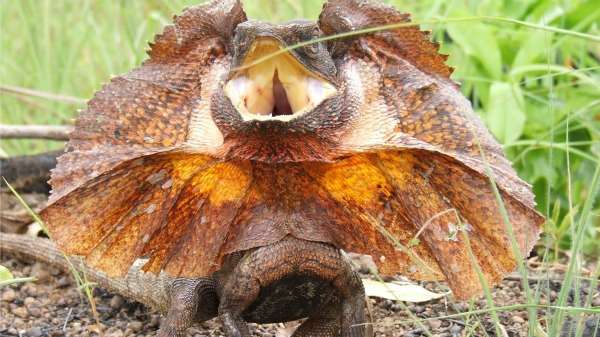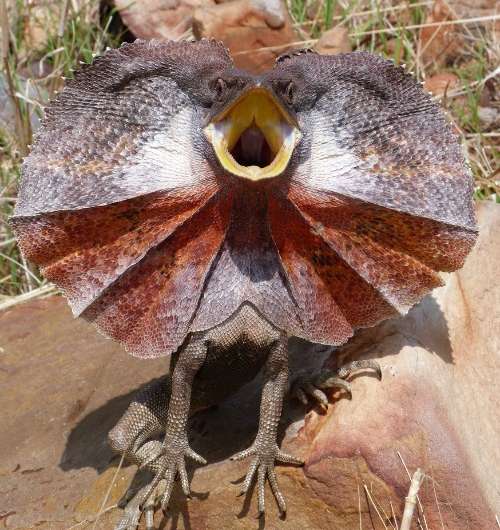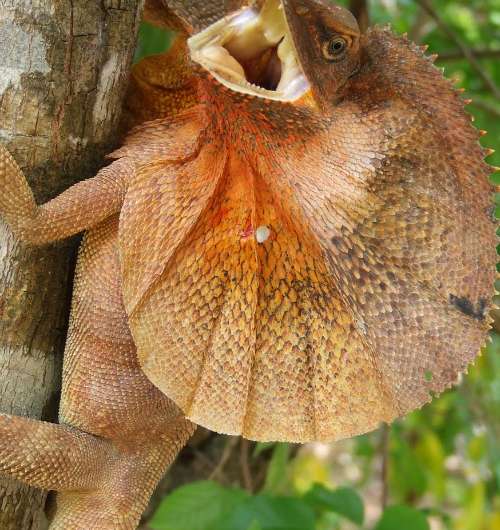Lizard bling colour may act as social cue

It would come as no surprise to hear that people who live in a certain area and consume a certain diet—perhaps residents of Perth's more affluent suburbs—may present themselves in a certain way to show off to everyone else.
But it may surprise people to learn that frill-necked lizards (Chlamydosaurus kingii) in the Kimberley could be guilty of the same behaviour.
Researchers recently studied frill-necked lizards in the Kimberley, Northern Territory and Queensland finding their frill colour, which ranges from red, orange, yellow and white, varies based on their geographical location and likely their diet.
The scientists took skin samples from lizards and performed biochemical tests to identify and quantify the pigments responsible for differences in frill colour.
ANU post-doctoral fellow Thomas Merkling says all the lizards possessed carotenoid pigments, which they need to survive.
"We know they need to get this pigment from their food and that's why we think the differences in colours are due to differences in their diets," Dr Merkling says.
The WA lizards, which were collected from Wyndham, Kununurra and surrounding areas, had a higher concentration of carotenoids than those in Queensland, suggesting their prey contained more pigments.
The study found another pigment called pteridine in the lizards' frills, but only in those from the Kimberley and Northern Territory.
"For this pigment, they don't need to eat anything—they have the internal machinery within the cell to synthesise this pigment," Dr Merkling says.

Both pigments have a red colour, leading them to believe the red and orange colours in lizards from WA and the Northern Territory is due to the red pteridine pigment with the high concentration of carotenoid.
"Given that the lizards need to take one pigment from the diet and they can synthesise the other, we think that for the lizards that have the two types of pigment, the function of the frill might be different to individuals that only have one type," he says.
Dr Merkling says an unpublished study examined red and yellow lizards as they fought for a small trunk in an arena.

"One of the hypothesis is the colour of the frill is used by the individuals to assess the competitive abilities of the other one," he says.
"So we expect that if the colour of the frill has different functions between the red and the yellow, the colour may predict the outcome of the contest in one population but not in the other."
More information: Thomas Merkling et al. Proximate mechanisms of colour variation in the frillneck lizard: geographical differences in pigment contents of an ornament, Biological Journal of the Linnean Society (2015).
Provided by Science Network WA
This article first appeared on a science news website based at Scitech.



















